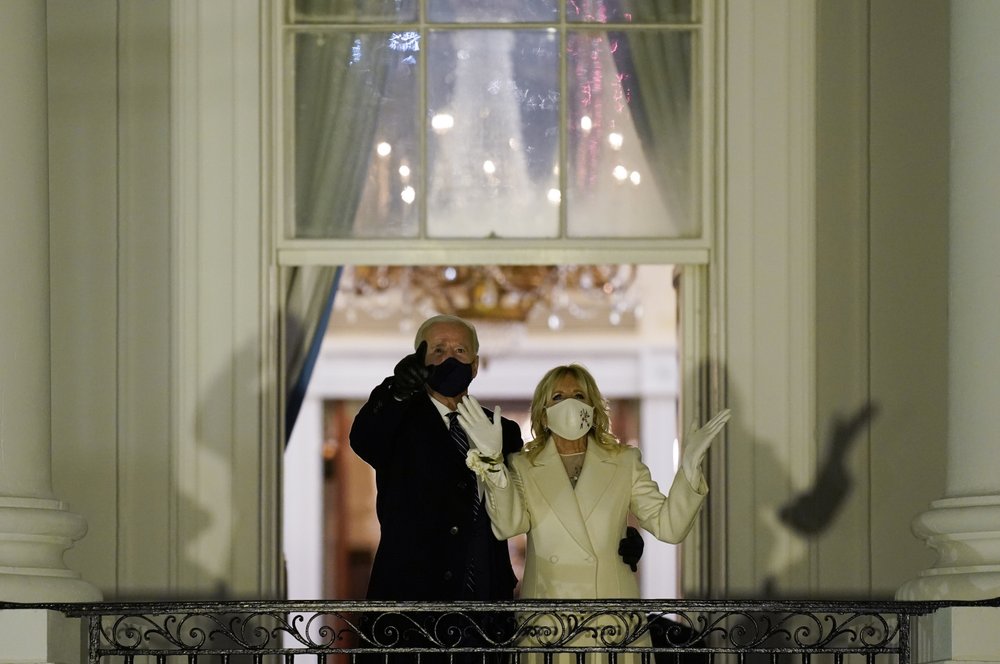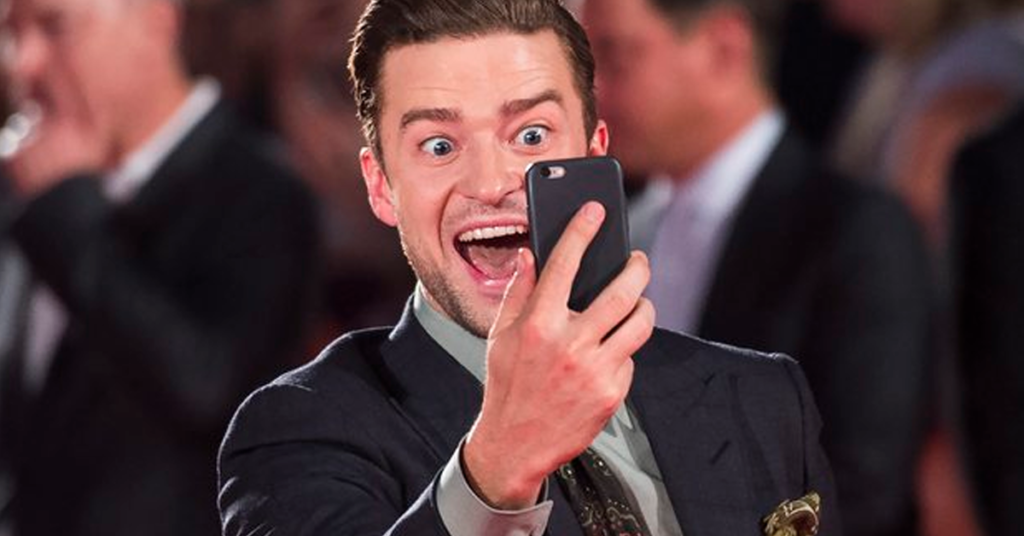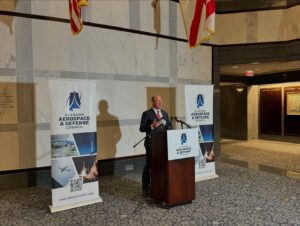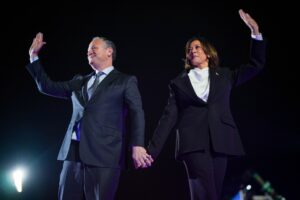Joe Biden takes the helm, appeals for unity to take on crises

Joe Biden was sworn in as the 46th president of the United States, declaring that “democracy has prevailed” and summoning American resilience and unity to confront the deeply divided nation’s historic confluence of crises. Denouncing a national “uncivil war,” Biden took the oath Wednesday at a U.S. Capitol that had been battered by an insurrectionist siege just two weeks earlier. Then, taking his place in the White House Oval Office, he plunged into a stack of executive actions that began to undo the heart of his polarizing predecessor ’s agenda on matters from the deadly pandemic to climate change. At the Capitol, with America’s tradition of peaceful transfers of power never appearing more fragile, the ceremony unfolded within a circle of security forces evocative of a war zone and devoid of crowds because of the coronavirus pandemic. Instead, Biden gazed out on a cold Washington morning dotted with snow flurries to see over 200,000 American flags planted on the National Mall to symbolize those who could not attend in person. “The will of the people has been heard, and the will of the people has been heeded. We’ve learned again that democracy is precious and democracy is fragile. At this hour, my friends, democracy has prevailed,” Biden declared in his speech. “This is America’s day. This is democracy’s day. A day of history and hope, of renewal and resolve.” History was made at his side, as Kamala Harris became the first woman to be vice president. The former U.S. senator from California is also the first Black person and the first person of South Asian descent elected to the vice presidency and the highest-ranking woman ever to serve in the U.S. government. Biden never mentioned his predecessor, who defied tradition and left town ahead of the ceremony, but his speech was an implicit rebuke of Donald Trump. The new president denounced “lies told for power and for profit” and was blunt about the challenges ahead. Central among them: the surging virus that has claimed more than 400,000 lives in the United States, as well as economic strains and a national reckoning over race. “We have much to do in this winter of peril, and significant possibilities. Much to repair, much to restore, much to heal, much to build and much to gain,” Biden said. “Few people in our nation’s history have been more challenged, or found a time more challenging or difficult than the time we’re in now.” Biden was eager to go big early, with an ambitious first 100 days including a push to speed up the distribution of COVID-19 vaccinations to anxious Americans and pass a $1.9 trillion economic relief package. It included a blitz of executive orders on matters that don’t require congressional approval — a mix of substantive and symbolic steps to unwind the Trump years. His actions included re-entry into the Paris Climate Accords and a mandate for wearing masks on federal property. “There’s no time to start like today,” a masked Biden said. in the Oval Office. Then he swore in hundreds of aides — virtually — telling them, “You’re my possibilities.” The absence of Biden’s predecessor from the inaugural ceremony underscored the national rift to be healed. But a bipartisan trio of former presidents — Bill Clinton, George W. Bush, and Barack Obama — were there to witness the transfer of power. Trump, awaiting his second impeachment trial, was at his Florida resort by the time the swearing-in took place. Biden, in his third run for the presidency, staked his candidacy less on any distinctive political ideology than on galvanizing a broad coalition of voters around the notion that Trump posed an existential threat to American democracy. Four years after Trump’s “American Carnage” speech painted a dark portrait of national decay, Biden warned that the fabric of the nation’s democracy was tearing but could be repaired. “I know the forces that divide us are deep and they are real. But I also know they are not new. Our history has been a constant struggle between the American ideal that we are all created equal and the harsh, ugly reality that racism, nativism, fear, demonization have long torn us apart,” Biden said. “This is our historic moment of crisis and challenge, and unity is the path forward and we must meet this moment as the United States of America.” Swearing the oath with his hand on a five-inch-thick Bible that has been in his family for 128 years, Biden came to office with a well of empathy and resolve born by personal tragedy as well as a depth of experience forged from more than four decades in Washington. At age 78, he is the oldest president inaugurated. Both he, Harris, and their spouses walked the last short part of the route to the White House after an abridged parade. Biden then strode into the Oval Office, a room he knew well as vice president, for the first time as commander in chief. At the Capitol earlier, Biden, like all those in attendance, wore a face mask except when speaking. Tens of thousands of National Guard troops were on the streets to provide security precisely two weeks after a violent mob of Trump supporters, incited by the Republican president, stormed the building in an attempt to prevent the certification of Biden’s victory. “Here we stand, just days after a riotous mob thought they could use violence to silence the will of the people,” Biden said. “To stop the work of our democracy. To drive us from this sacred ground. It did not happen. It will never happen. Not today, not tomorrow. Not ever. Not ever.” The tense atmosphere evoked the 1861 inauguration of Abraham Lincoln, who was secretly transported to Washington to avoid assassins on the eve of the Civil War, or Franklin Roosevelt’s inaugural in 1945, when he opted for a small, secure ceremony at the White House in the waning months of World War II. But Washington all but deserted downtown and in its federal
Joe Biden takes the helm as president facing pandemic, divisions

Joe Biden became the 46th President of the United States on Wednesday, swearing the oath of office just before noon to take the helm of a deeply divided nation while inheriting a confluence of crises arguably greater than any faced by his predecessors. Biden’s inauguration came at a time of national tumult and uncertainty, a ceremony of resilience as the hallowed American democratic rite unfurled at a U.S. Capitol battered by an insurrectionist siege just two weeks ago. On a chilly Washington day dotted with snow flurries, a bipartisan trio of ex-presidents along with the elite of nation’s government gathered, ensuring the quadrennial ceremony persevered, even though it was encircled by security forces evocative of a war zone and devoid of crowds because of the coronavirus pandemic. Stay home, Americans were exhorted, to prevent further spread of a surging virus that has claimed more than 400,000 lives in the United States. Biden looked out over a capital city dotted with empty storefronts that attest to the pandemic’s deep economic toll and where summer protests laid bare the nation’s renewed reckoning on racial injustice. And he was not applauded by his predecessor. Flouting tradition, Donald Trump departed Washington on Wednesday morning ahead of the inauguration rather than accompany his successor to the Capitol. Though three other former presidents — Bill Clinton, George W. Bush, and Barack Obama — gathered to watch the ceremonial transfer of power, Trump, awaiting his second impeachment trial, instead flew to Florida after stoking grievance among his supporters with the lie that Biden’s win was illegitimate. Biden, in his third run for the presidency, staked his candidacy less on any distinctive political ideology than on galvanizing a broad coalition of voters around the notion that Trump posed an existential threat to American democracy. On his first day, Biden will take a series of executive actions — on the pandemic, climate, immigration, and more — to undo the heart of Trump’s agenda at a moment with the bonds of the republic strained. “Biden will face a series of urgent, burning crises like we have not seen before, and they all have to be solved at once. It is very hard to find a parallel in history,” said presidential historian Michael Beschloss. “I think we have been through a near-death experience as a democracy. Americans who will watch the new president be sworn in are now acutely aware of how fragile our democracy is and how much it needs to be protected.” Biden will come to office with a well of empathy and resolve born by personal tragedy as well as a depth of experience forged from more than four decades in Washington. At age 78, he was the oldest president inaugurated. More history was made at his side, as Kamala Harris became the first woman to be vice president. The former U.S. senator from California is also the first Black person and the first person of South Asian descent elected to the vice presidency and will become the highest-ranking woman ever to serve in government. The two will be sworn in during an inauguration ceremony with few parallels in history. Tens of thousands of troops are on the streets to provide security precisely two weeks after a violent mob of Trump supporters, incited by the Republican president, stormed the Capitol in an attempt to prevent the certification of Biden’s victory. The tense atmosphere evoked the 1861 inauguration of Abraham Lincoln, who was secretly transported to Washington to avoid assassins on the eve of the Civil War, or Franklin D. Roosevelt’s inaugural in 1945, when he opted for a small, secure ceremony at the White House in the waning months of World War II. The day began with a reach across the aisle after four years of bitter partisan battles under Trump. At Biden’s invitation, congressional leaders from both parties bowed their heads in prayer in the socially distanced service just a few blocks from the White House. Once at the Capitol, Biden will be administered the oath by Chief Justice John Roberts; Harris will be sworn in by Justice Sonia Sotomayor, the first Latina member of the Supreme Court. Vice President Mike Pence, standing in for Trump, was sitting nearby as Lady Gaga, holding a gold microphone, sang the National Anthem accompanied by the U.S. Marine Corps band. The theme of Biden’s approximately 30-minute speech will be “America United,” and aides said it would be a call to set aside differences during a moment of national trial. Biden will then oversee a “Pass in Review,” a military tradition that honors the peaceful transfer of power to a new commander in chief. Then, Biden, Harris, and their spouses will be joined by that bipartisan trio of former presidents to lay a wreath at the Tomb of the Unknown Soldier at Arlington National Ceremony. Later, Biden will join the end of a slimmed-down inaugural parade as he moves into the White House. Because of the pandemic, much of this year’s parade will be a virtual affair featuring performances from around the nation. Full Coverage: Biden’s inauguration In the evening, in lieu of the traditional glitzy balls that welcome a new president to Washington, Biden will take part in a televised concert that also marks the return of A-list celebrities to the White House orbit after they largely eschewed Trump. Among those in the lineup: Bruce Springsteen, Justin Timberlake, and Lin-Manuel Miranda. “I protested 45’s inauguration, and I wanted to be here when he left,” said Raelyn Maxwell of Park City, Utah. ”And I wanted to celebrate the new president.” She brought a bouquet of roses she hoped to toss to Harris and some champagne to toast the occasion. Trump is the first president in more than a century to skip the inauguration of his successor. In a cold wind, Marine One took off from the White House and soared above a deserted capital city to his own farewell celebration at nearby Joint Base Andrews. There, he boarded Air Force One for the final time as president for the flight to his Florida estate. “I will
Justin Timberlake’s ballot selfie highlights mixed laws

Now even Justin Timberlake has been forced to deal with the question of whether a ballot selfie is legal. Timberlake flew from California to Tennessee to vote early this week, but his posting of an image of himself at the voting booth on Instagram on Monday drew questions about whether he was breaking the law. A Tennessee law that took effect earlier this year bars voters from taking photographs or video while they’re inside a polling location. While secrecy in the voting booth has become a thing of the past for those ready to share their views and daily lives on social media, laws nationwide are mixed on whether voters are allowed to take pictures of themselves voting and their ballots. Federal courts have struck down bans in New Hampshire and Indiana, and on Monday, a judge in Michigan blocked enforcement of a ban on ballot selfies, saying it violates free speech. Tennessee Secretary of State spokesman Adam Ghassemi said officials are “thrilled Justin can’t stop the feeling” but reminded voters to use their phones inside polling locations only to help them vote. Timberlake lives in California, but grew up in the Memphis area and owns property near Nashville. How states handle the question: — STATES WHERE BALLOT SELFIES ARE ALLOWED CONNECTICUT: No law bans ballot selfies, according to Patrick Gallahue, a spokesman for Secretary of State Denise Merrill. But election moderators have discretion to prohibit activity “that threatens the orderly process of voting or the privacy of another voter’s ballot.” DISTRICT OF COLUMBIA: There’s no ban. Election officials discourage people from taking pictures but won’t do anything to stop them, said Tamara Robinson, a spokeswoman for the D.C. Board of Elections. HAWAII: A law passed this year allows voters to share a digital image of one’s own marked ballot. IDAHO: There’s no law banning them, the secretary of state’s office said. INDIANA: A federal judge last year barred the state from enforcing a new law prohibiting ballot selfies. KENTUCKY: Secretary of State spokesman Bradford Queen says state law does not allow people to record the likeness of a voter, but the law does not say whether voters can record their own likeness. Therefore, the secretary of state’s office routinely tells county clerks the law does not prohibit ballot selfies. LOUISIANA: Secretary of State Tom Schedler says ballot selfies are allowed in the state, though he’s not a fan of them. MAINE: The secretary of state discourages ballot selfies because there’s a ban on making unauthorized ballot copies, but there’s no law against voters posting photos of their marked ballot. MICHIGAN: A federal judge on Monday blocked enforcement of a ban on ballot selfies, saying it violates free speech. Lawyers for Secretary of State Ruth Johnson predicted “chaos” at polling places, but the judge on Wednesday denied the state’s request to freeze her order while they appeal. MINNESOTA: Allowed as long as they’re not shown to fellow voters at the polling place or capture another person in the photo. MONTANA: Law does not specifically prohibit the use of cameras at polling places, but election administrators and judges have broad authority to limit disruptive activity, according to Emily Dean, spokeswoman for the secretary of state. Sharing photos of absentee ballots is also not banned. NEBRASKA: Gov. Pete Ricketts signed a bill in April that allows someone to show their marked ballots to others without risking a $100 fine. NEW HAMPSHIRE: The 1st Circuit Court of Appeals in Boston last month upheld a decision that a ban was unconstitutional, saying it suppresses a large swath of political speech and there was no evidence to support the state’s concerns. NORTH DAKOTA: Photos inside polling places are allowed. OREGON: All voting is done through mail-in ballots, which voters are free to photograph. A state law prohibiting showing a marked ballot to another person was repealed in 2014, according to Molly Woon, a spokeswoman for Secretary of State Jeanne Atkins. RHODE ISLAND: The Board of Elections adopted new rules in time for November’s election that allow for selfie-taking inside polling places. The updated regulations allow voters to take photos as long as they don’t show another person’s ballot. UTAH: Gov. Gary Herbert signed a bill last year that makes it legal for people to snap pictures of themselves with their ballots. The law makes it a misdemeanor to photograph someone else’s ballot. VERMONT: No rules regarding photos in polling places. Clerks are encouraged to adopt specific rules for their polling places to maintain order, according to Jim Condos, a spokesman for the secretary of state. VIRGINIA: Attorney General Mark Herring issued a formal opinion last month that says ballot selfies are legal in Virginia. Nothing in Virginia law prohibits voters from taking pictures of themselves, fellow voters or their ballot within the polling place, he said. WASHINGTON STATE: It’s not against the law in Washington, but a spokesman for Secretary of State Kim Wyman said the office doesn’t recommend it. WYOMING: No laws against ballot selfies. Law does allow judges of elections to “preserve order at the polls by any necessary and suitable means.” — STATES WHERE BALLOT SELFIES ARE ILLEGAL ALABAMA: Not allowed because voters have “a right to cast a ballot in secrecy and in private,” said a spokesman for Secretary of State John Merrill. ALASKA: A state law bans voters from showing their marked ballots, but Division of Elections Director Josie Bahnke says there is no practical way to enforce it. COLORADO: Ballot selfies or any public dissemination of a marked ballot are considered a misdemeanor. A 2016 bill to repeal the ban failed. FLORIDA: Photographs are not allowed in polling places or of mailed ballots. GEORGIA: Law prevents photos of ballots or the screens of electronic voting machines. ILLINOIS: Banned by a law that considers “knowingly” marking your ballot so that another person can see it is a felony that carries a prison sentence of one to three years. KANSAS: Secretary of state says a selfie showing a picture of


